As the world trundles into the new year, you could buy the 2024 BMW 5 Series, rocking a fresh but unmistakable Bimmer looks, larger, more powerful, and choke-full of smart driver-aid technologies. It will just set you back a paltry $58,895 to get started. How about the sportier Audi RS 3? After all, it's the most powerful A3 Audi ever made. With over 400 horsepower at its disposal and a cutting-edge driver-adjustable suspension system, the compact sports sedan’s $62,795 starting price is right on the ball.
There are, in fact, many other fantastic new cars within the $50,000 threshold, but none with the Spirit of Ecstasy perched on the hood is on that list. For context, the estimated price range of the 2024 Rolls-Royce Phantom is between $493,000 and $660,000. This estimate is based on the current model, which starts at $493,000 and $573,000 for the EWB (extended wheelbase) version. Alright, those are for the new Phantoms. How about used models?
We found only two ‘05 Rolls-Royce Phantoms on TrueCar listings, one with less than 17K miles, while the other has 45,601 miles. While the latter kept its price on a need-to-know basis, the former is asking for $89,888. To get a better picture, using ConceptCarz’s valuation tool, the average sale value of a 2005 Rolls-Royce Phantom is $103,814, with $78,400 as the lowest it was ever sold and up to $162,800 as the highest sale value.
What if you could buy the same car for just $49,995? That’s exactly how much the Houston, Texas-based Scott Harrison Motor Co. is offering one for sale. These are actual photos of the car.
See also: This Classic 1929 Mercedes-Benz Gazzele Convertible Could Be Yours For $19,500
What Is The 2005 Rolls-Royce Phantom?
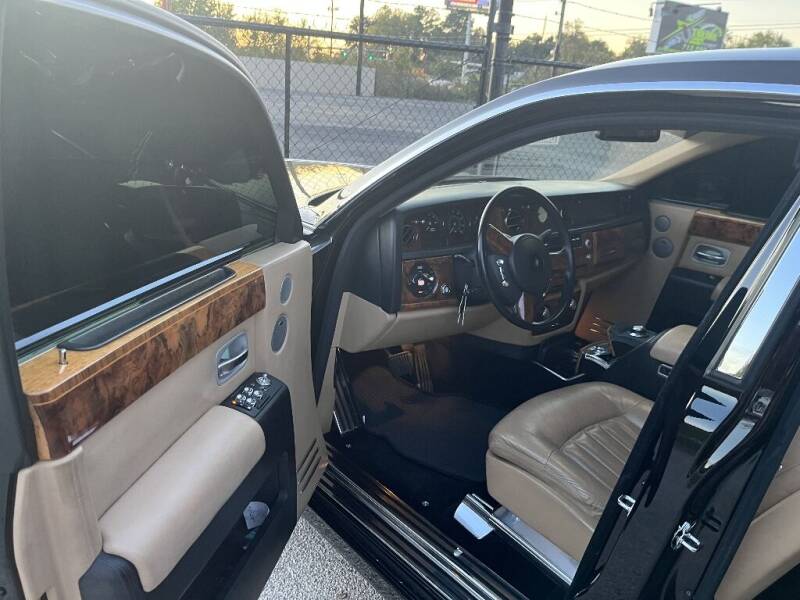
Introduced in 2003, the Phantom was Rolls-Royce’s flagship full-sized luxury sedan. The vehicle’s birth marked a significant milestone for the BMW-owned Rolls-Royce Motor Cars, emerging as the inaugural Rolls-Royce model under the German Bimmer’s banner. BMW had acquired the Rolls-Royce name and logo roughly five years earlier.
This Phantom wasn’t the first of its name. It was, in fact, the seventh iteration of the iconic nameplate. It played a pivotal role in revitalizing the Rolls-Royce legacy and reaffirming its status as a premier producer of opulent automobiles. It was, in fact, the sole Rolls-Royce offering until the more compact Ghost was born in 2009.
The Phantom's only-child status between 2003 and 2009 is probably why a $50,000 used Rolls is possible. Being the automaker's only product for years spurred a higher production volume than its predecessors.
Even so, the Phantom isn't everywhere you look. Rolls-Royce never made beyond 600 a year. The final chapter of this resurrected Phantom ended in January 2017. The next chapter, the Rolls-Royce Phantom VIII, opened later that same year.
The First Chapter: Phantom VII (2003–2017)
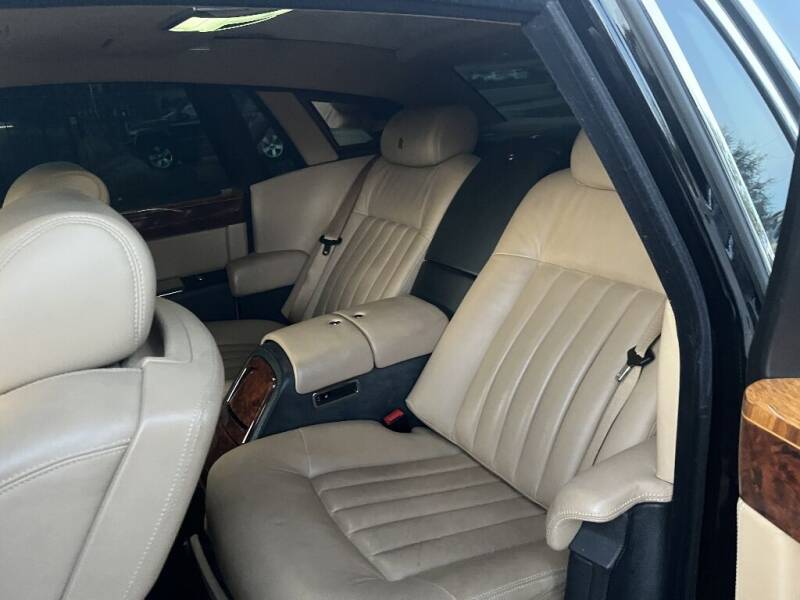
The resurrected VII Phantom rode on a distinctive chassis platform and wore a body and interior design that paid close homage to traditional Rolls-Royce styling. However, the car’s predominantly aluminum body reflected an appetite for and a drive toward lightweight sophistication.
Though under the Bimmer’s umbrella, the new Phantom was finished in the Rolls-Royce Goodwood plant in West Sussex. Naturally, the production plan had exclusivity written all over it.
Each Phantom was tailored to each customer’s exact specifications, a bespoke production model that included the bodywork, paint application, wood detailing, and leather craftsmanship. Buying a used Phantom means you don't get to indulge in this level of customization, but having someone else absorb the original premium price is more than enough consolation.
The '05 Phantom had a starting MSRP of $328,750. That’s $512,727 adjusted for inflation. Rolls-Royce strives to offer cars that provide every possible convenience for a pampered, hassle-free travel experience.
Some even come with RR-branded umbrellas, mirroring the all-under-one-roof production facility, housing various workshops, including a paint shop, body shop, leather shop, woodworking shop, assembly line, and executive offices. The plant is even close to the historic Goodwood Motor Racing Circuit.
Reportedly, there were no more than three robots involved in the Phantom’s production, which means the car you see in these pictures was mostly made by hand.
The robot’s job was to paint the body, but each coat was polished by hand. As is Rolls-Royce’s tradition, everything else, including the intricate coach lines (precisely 3 mm wide) along with all other details, are meticulously hand-made by skilled artisans.
See also: How Much Will The 2024 Rolls-Royce Spectre Cost? – Everything You Want To Know
What’s So Special About The 2005 Rolls-Royce Phantom?
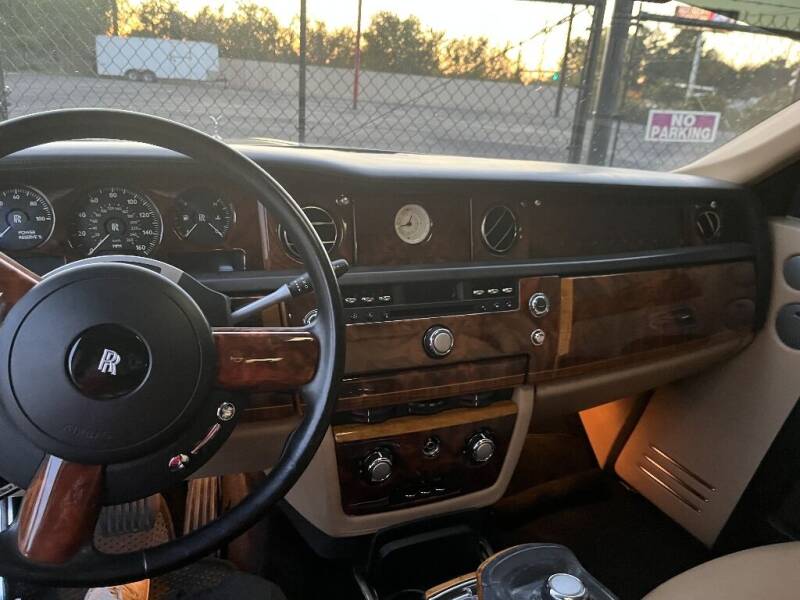
The Chassis
The Rolls-Royce Phantom VII owes its structural prowess to the aluminum spaceframe that traveled transcontinental for this purpose.
Starting with hydroelectric power-produced aluminum extrusions in Norway, the components are then shaped and machined in Denmark before ending up in Germany, where skilled artisans hand-weld them to perfection.
You see the Phantom’s majestic size and commanding presence? That’s because it stands 1.63 m tall, 1.99 m wide, and extends to a length of 5.83 m. It weighs 2,485 kg, allowing the lumbering art on wheels to accelerate to 60 mph in a respectable 5.9 seconds.
Note that Rolls-Royce presented the EWB variant of the 2005 Phantom in March of that year, measuring 250 mm (9.8 in) longer than the standard Phantom.
Elegant Design
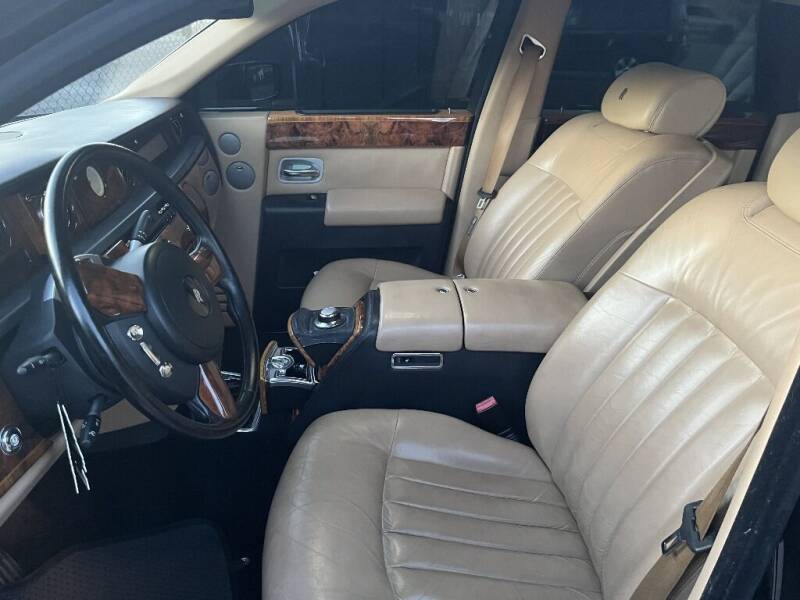
Depending on who you ask, the Phantom’s most defining design element is the rear-hinged rear doors, known in the industry as suicide doors. Rolls-Royce has a rather more elegant term for it – 'coach doors.' People called it suicide doors because of what would likely happen should the doors accidentally open while the car is in motion.
To ensure safety, the Phantom incorporates an electronic lock that prevents such accidental door openings while in motion. Plus, the car intelligently brakes to a walking speed if a coach door remains ajar while driving.
This iconic design was pioneered by the original 1925 Phantom, with buttons on the C-pillars to activate hydraulic motors closing the rear doors with spectacular style.
See also: Meet The Rolls-Royce Of All SUVS: 2024 Cullinan Review
Attention To Details
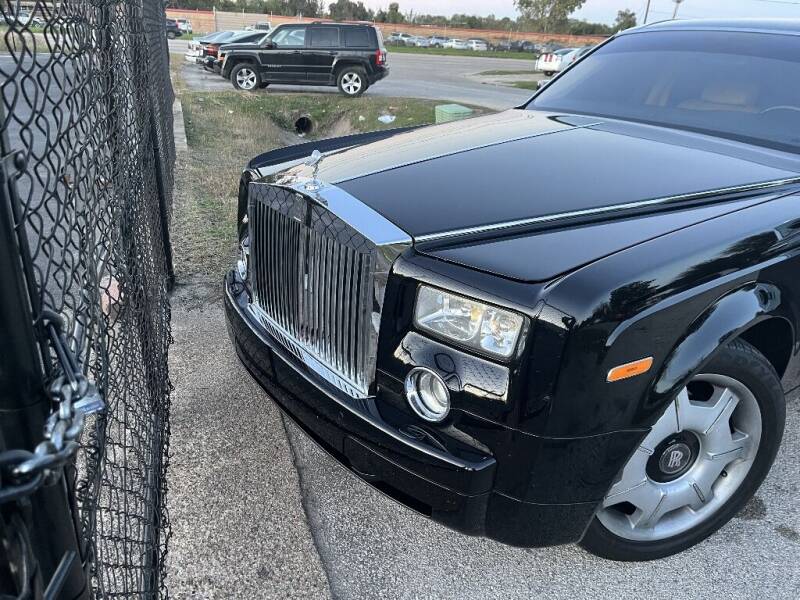
Opening the front or rear doors reveals discreetly integrated umbrella compartments within the rear doors, each equipped with Teflon-coated umbrellas for swift drying. These thoughtful details, including the retracting Spirit of Ecstasy on the hood, are cumulatively what make a Rolls-Royce.
The iconic symbol doesn't only retreat inside to hide from blokes with sticky fingers but also to prioritize pedestrian safety during accidents. Drivers can easily retract it at will or activate the retraction via the alarm system. A sensor in the ornament base detects movement, prompting retraction if tampered with.
The attention to detail travels as far as the wheels. The "RR" logos on the wheel hubs are independent bezels, allowing them to stay upright while the wheel turns – a subtle yet distinctive touch that underscores the commitment to excellence in every detail.
Notably, the 2005 Phantom’s instrument panel eschewed a tachometer. Instead, a power reserve dial communicates the unutilized engine power available to the driver, a unique feature exemplifying the car's advanced design.
Also, note that the VII Phantom was part of a 2010 recall of V8 and V12-powered BMW cars in 2010. The recall was due to a potential tiny leak in the power braking system, which, if left unchecked, could lead to brake booster contamination. So, you want to ask about this when you ask about this car.
2005 Rolls-Royce Phantom’s Engine, Drivetrain, And Performance
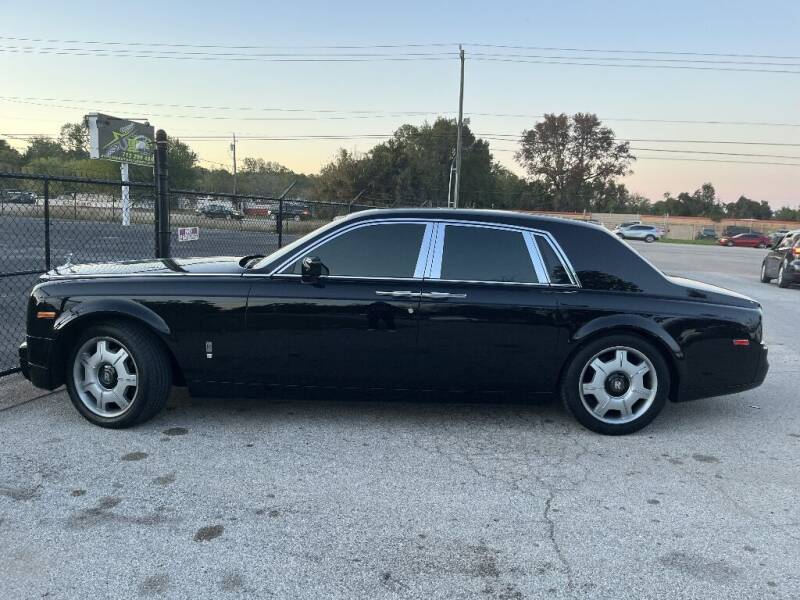
The Phantom received propulsion power from a 6.75-liter naturally aspirated V12 engine with direct fuel injection and variable valve timing, essentially a modern iteration of the classic Rolls-Royce V12 powerplant, featuring advanced engineering and technology to deliver smooth, refined power.
Hand-built and meticulously assembled to meet the brand’s exacting standards, the engine was good for approximately 453 horsepower and a prodigious torque output of 531 lb-ft at a low engine speed, ensuring effortless acceleration and regal authoritative performance.
Rolls-Royce paired the V12 with a specially calibrated 6-speed automatic transmission designed to complement the engine's characteristics. As for the drivetrain, the 2005 Rolls-Royce Phantom featured a rear-wheel-drive (RWD) configuration, which is a traditional layout for luxury sedans.
The RWD setup and advanced suspension system contributed to the Phantom's poised handling and composed ride quality. Despite the car's substantial size and weight, the V12 engine and smooth-shifting transmission allowed the Phantom to accelerate effortlessly and cruise at high speeds with remarkable composure.